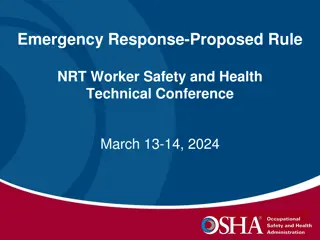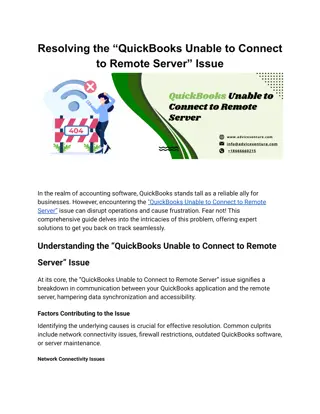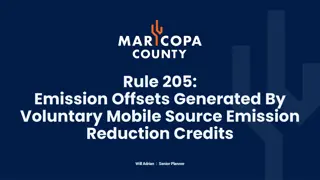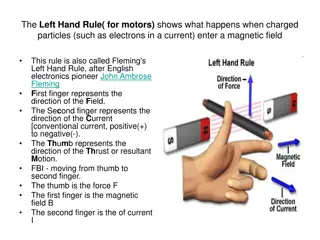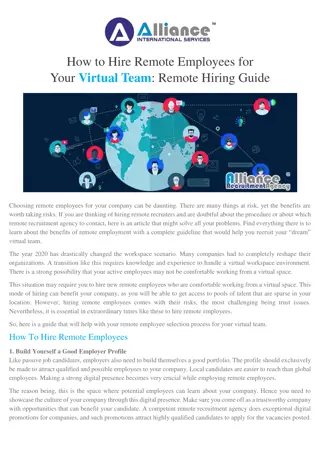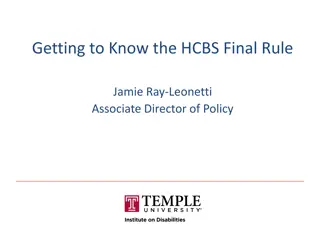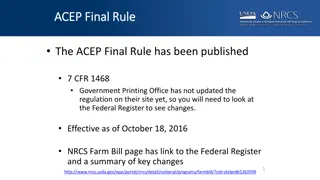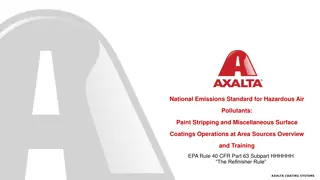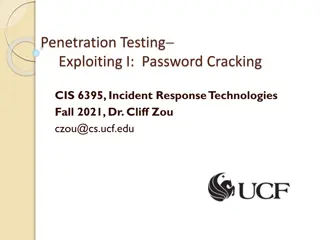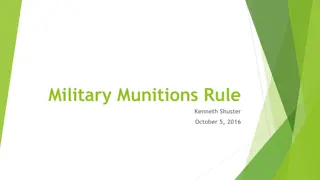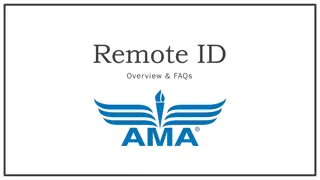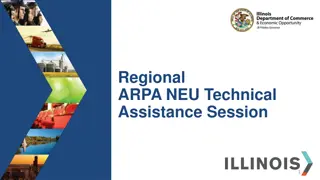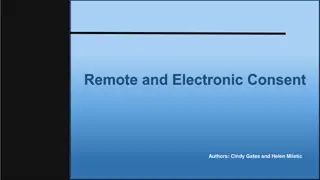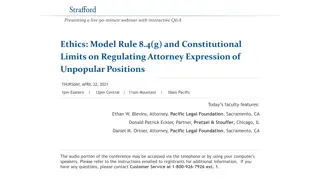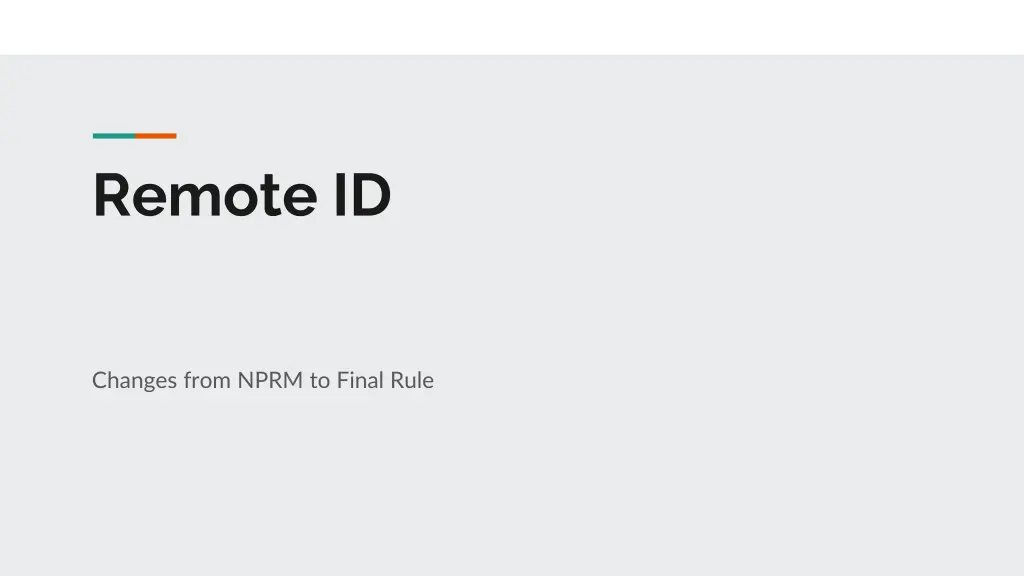
Changes in FAA Remote ID Regulations from NPRM to Final Rule
"Learn about the transition of FAA Recognized Identification Areas (FRIA) from Notice of Proposed Rulemaking (NPRM) to the Final Rule, including details on application deadlines, appeals processes, CBO affiliations, and temporary/event flying site regulations. Stay informed on the latest updates to remote ID rules." (267 characters)
Download Presentation

Please find below an Image/Link to download the presentation.
The content on the website is provided AS IS for your information and personal use only. It may not be sold, licensed, or shared on other websites without obtaining consent from the author. If you encounter any issues during the download, it is possible that the publisher has removed the file from their server.
You are allowed to download the files provided on this website for personal or commercial use, subject to the condition that they are used lawfully. All files are the property of their respective owners.
The content on the website is provided AS IS for your information and personal use only. It may not be sold, licensed, or shared on other websites without obtaining consent from the author.
E N D
Presentation Transcript
Remote ID Changes from NPRM to Final Rule
Definitions FRIA (FAA Recognized Identification Area) Flying site registered with the FAA through a CBO or Educational Institution where flying models without Remote ID is allowed. CBO (Community Based Organization) 501c3 organizations recognized by the FAA as having a mission highly associated with UAS flight and education. No organizations have, as of yet, been granted CBO status, but AMA is anticipated to be granted this status first out of the gate. UAS (Unmanned Aerial System) Airframe of the drone, quadcopter, plane, helicopter, glider, etc. along with the transmitter/control station and all associated electronics and power systems. Usually interchangeable with model . VLOS/BVLOS (Visual Line of Sight / Beyond Visual Line of Sight) VLOS includes FPV where-in the UAS is within VLOS of the pilot s position and in active visual tracking of the spotter.
All the Details https://www.modelaircraft.org/amainaction https://www.faa.gov/uas/getting_started/remote_id/ https://www.faa.gov/news/media/attachments/RemoteID_Final_Rule.pdf
FAA Recognized Identification Area (FRIA) NPRM Concerns 1 year application deadline. No means to significantly amend FRIA site information after the 1 year deadline. No appeals or reapply process. Once FRIA status was lost, it could not be re-attained. Site must be CBO affiliated to apply and retain FRIA status. Application must come through a CBO. No temporary site/event accommodation.
FAA Recognized Identification Area (FRIA) Final Rule: No deadline on applications. 1 year application deadline removed. Appeals process included. Details not spelled out in rule, advisory circular will include details. Sites that must move or significantly amend their filing may now do so. Sites that lose FRIA status due to safety or other concern may take action to resolve or mitigate the issue and then reapply for FRIA status. Sites that miss renewal deadline are allowed to re-submit applications. FAA administrator is also allowed to consider late renewal filings. CBO affiliation is still a requirement. Final rule adds educational institutions (preK-12, college, vocational/trade) to the list allowed to file FRIA applications. Applications must come through affiliated organization.
Temporary/Event Flying Sites FAA will not allow temporary flying sites to seek or be granted FRIA status. FAA will have a process in place by 30 months after effective date of the rule, in order for temporary event sites to seek exemption to Remote ID rules.
Limited Remote ID NPRM Concerns: 400ft distance from take-off position restriction. Tight integration into flight control system, including transmitter/control station. Required internet connection before and during flight. Required Remote ID USS (subscription). GPS connection and integration rules precluded indoor flight or bench testing.
Limited Remote ID Final rule: Internet connectivity removed from rule! Remote ID USS subscription service removed from rule! As a result, since Limited Remote ID relied entirely on the Internet and Remote ID USS for Remote ID message transmission, Limited Remote ID was also removed from the rule! Standard Remote ID remains in place. However, it uses radio broadcast message transmission only. No Internet message sending is included there either.
Remote ID Broadcast Module Small, cheap standalone or plug-in component that can be retrofitted to existing fleet or considered in the design of new non-Standard Remote ID UAS, that will satisfy Remote ID requirements and allow flight outside FRIA. FAA envisions these devices to cost no more than $50. Just like with Standard Remote ID, uses radio broadcast to send Remote ID messages from the aircraft/model, not the transmitter. Message data is slightly different than Standard Remote ID message due to not having tight integration or transmitter/control station positional data. No need to outfit each model with a unique module. Purchase one module and move to model you are flying at the time. No 400 ft restriction, but UAS using this module are restricted to VLOS only. BVLOS requires Standard Remote ID.
Amateur-Built UAS NPRM Concerns: Proposed rule for Pre-Fabricated Parts Kits, and model types that didn t meet the 50% threshold of a Amateur- Built UAS, required builder to make the model Remote ID compliant. Hugely expensive and time consuming requirement, practically speaking it was an impossible requirement. Amateur-Built UAS were the only type of model with an exemption to Remote ID producer rules. Defined as 50% (or more) fabricated and assembled by the modeler, leaving a large number of model types falling under Remote ID production rules at modeler s expense. The 50% rule was an attempt to carry full scale experimental/amateur-built aircraft production rules over to the UAS space. How it would be applied was not at all clear.
Amateur-Built UAS Final Rule: FAA is greatly simplifying the whole Amateur-Built vs build from Prefabricated Parts UAS vs Complete UAS or Complete Kits issue. FAA is eliminating the Amateur-Built and Pre-fabricated Parts Kits language. Instead there is Home Built category which includes every kind of model that is not manufactured as a complete, ready to fly UAS. Only models sold as complete, ready to fly UAS (either pre-assembled or in kit form) must comply with Standard Remote ID production rules. All others are exempt from being required to build in Remote ID compliance. With the new Remote ID Broadcast Module provision in this rule, it is up to the operator to assure Remote ID compliance if their UAS was not produced as a Standard Remote ID UAS and flying outside of a FRIA.
Registration NPRM Concerns: Proposal created requirement that recreational flyers had to individually register each model they had, at $5 per model. Registrations required serial numbers to be entered in the registration record. If UAS did not have a serial number, one was to be generated for the model. Created high cost and logistical problems for those with large collections. Active buyers/sellers were potentially going to be on the hook for even more registration costs since there was no mechanism defined for refunding of unused registration time.
Registration Final Rule: FAA abandoning recreational per-model registration proposal. Retaining existing recreational pilot registration model. No changes to cost structure ($5 every 3 years). Adding ability and requirement to list your Standard Remote ID UAS on your recreational pilot registration record. No cost to add/remove/modify. Includes brand, model, and Remote ID serial number. Adding ability and requirement to list your Remote ID Broadcast Module serial numbers on your pilot registration record. Non-Remote ID models may also be listed? Required? No requirement to mark your models with Remote ID serial numbers. Existing requirement to mark your FAA ID on the outside of your models remains in effect.
Dates and Timelines Nothing from this rule is in effect yet. Final rule is anticipated to the entered into the Federal Register in early January 2021. 60 days after entering the Federal Register the Remote ID final rule becomes effective . This should happen in late February 2021. Again, nothing actually happens at this point except for some deadline timers starting. Remote ID Broadcast Module production rules start on that Feb 2021 date, but use of the modules doesn t become required for 30 more months. 18 months after becoming effective (late August 2022) a number of triggers/deadlines occur: FRIA applications can start to be submitted. UAS being produced after this date that fall into the Standard Remote ID required segment must be complaint. 30 months after becoming effective (late August 2023) the final triggers/deadlines occur: Any UAS lacking Remote ID compliance can only be flown at FRIA or temporary exemption sites. Any flight occurring off exempted/FRIA locations must be done with a Standard Remote ID compliant UAS or a UAS with a Remote ID Broadcast Module installed.
Dates and Timelines (cont) FRIA sites expire every 48 months. FRIA site renewals must be submitted to the FAA administrator no later than 120 days prior to expiration. Late filings may be considered at the administrator s discretion. FRIA sites that expire, are revoked, or are voluntarily delisted may be re-applied for, as if they were new applications. FRIA sites being revoked will be notified and given 30 days after FRIA termination to file an appeal.
Other Items Altitude limits, 400ft or otherwise, are not addressed in the final rule. Prior existing guidance and rules on altitude remain in effect. Removal of Limited Remote ID concept eliminated the only instance of distance/altitude restrictions from the rule. Registration for recreational UAS flying is per pilot and is $5 renewable every 3 years. If you are paying more or renewing more often you are doing so in error. All registration happens at https://faadronezone.faa.gov, accept no substitutes! AMA is not enforcing either FAA Registration or Remote ID rules. It is not AMA s job and they are under no obligation to do so. Some clubs or events may do their own enforcement efforts on this, either by their own volition or as a requirement of a Letter of Agreement with the FAA. Nothing in Remote ID rules eliminate the need to use the LAANC flight authorization system when flying within 5 miles of a controlled airport. CBO application procedure, FRIA application procedure, and recreational UAS pilot knowledge test are still pending release. Stay tuned.
Wrapping Up The Good: Huge changes for the better compared to the NPRM. Cellular service providers lost out big time. Remote ID USS service providers lost out big time. Hobbyist and hobby industry compliance made much simpler. Advocacy efforts of the AMA and the membership, along with that of other organizations commenting in alignment with our goals, made all the difference. The Bad: Though lessened, there are new regulations and hoops we will have to jump through. Door opened for further regulation as low altitude traffic management efforts ramp up. FRIA sites still dependent on CBO affiliation, meaning clubs cannot manage their own destiny when it comes to FRIA status.

